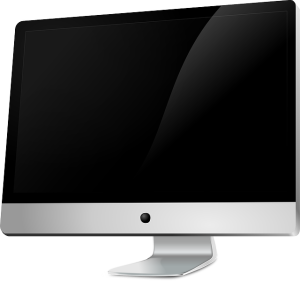Crafting Perfect Coffees: A Master Guide to Brewing Methods and Techniques
Mastering coffee brewing techniques such as French Press, pour-over, espresso, and cold brew allows …….

Mastering coffee brewing techniques such as French Press, pour-over, espresso, and cold brew allows for the creation of diverse flavors. Each method demands precise grind sizes, water temperatures, and timing to achieve its unique taste profile. Beginners should start with understanding the basics and equipment required for each technique before experimenting with variables like coffee-to-water ratios and grind consistency. As you advance, attention to detail becomes crucial in crafting the perfect cup, whether replicating café standards or innovating personalized brews. The article provides a detailed guide on pour-over coffee, emphasizing the importance of water temperature (92-96 degrees Celsius), proper filter paper usage, and consistent pouring technique for even flavor extraction within 2-4 minutes. It also clarifies the differences between cold brew and iced coffee, with cold brew requiring a longer soak time in room temperature or cold water for a less acidic, smoother taste, and iced coffee being quicker and resulting in a more robust flavor. Home espresso brewing requires attention to bean freshness, grind size, and tamp pressure to produce a quality shot with the right color and crema. Regular practice will enhance your skills, allowing you to achieve high-quality espresso at home that can rival professional café brews.
Discover the artistry and science behind crafting your perfect cup of coffee at home. Our comprehensive guide, “The Ultimate Guide to Coffee Brewing Methods,” delves into a range of techniques from the rich, full-bodied flavors of French Press to the delicate, crema-topped shots of Espresso. Explore the nuances of pour-over coffee that elevate your morning brew to café quality. Unravel the differences between Cold Brew and Iced Coffee, learning to create both with ease. With a focus on health, we also present 5 Delicious Coffee Recipes for a Morning Boost, incorporating nutritious ingredients for a guilt-free start to your day. Whether you’re a seasoned home barista or new to the coffee scene, this guide is your key to mastering the craft and indulging in the rich world of coffee brewing from the comfort of your kitchen.
- Mastering Coffee Brewing Methods: A Comprehensive Guide
- The Ultimate Pour-Over Technique for Home Baristas
- Cold Brew vs. Iced Coffee: Understanding the Differences and Crafting Both at Home
- Espresso Made Easy: Pulling the Perfect Shot on Your Home Machine
Mastering Coffee Brewing Methods: A Comprehensive Guide
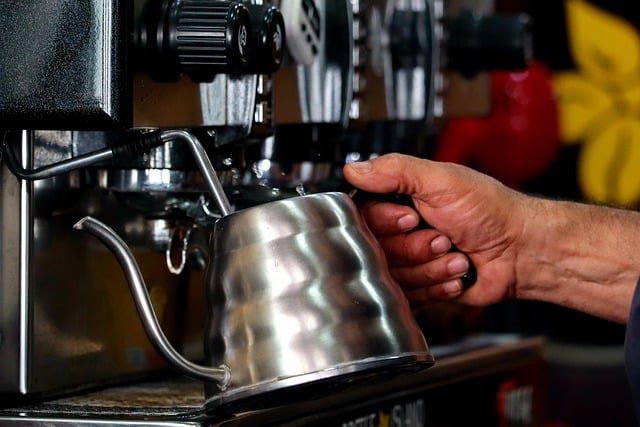
Mastering coffee brewing methods is an art that transforms the humble bean into a beverage that can invigorate your senses and elevate your mornings or provide a comforting break during your day. The journey to perfecting your home brew begins with understanding the various methods available, each offering its unique flavor profile and brewing experience. From the rich, full-bodied extraction of the French Press to the delicate, nuanced flavors of pour-over coffee, there is a technique for every preference and skill level. The key to success lies in the details: grind size, water temperature, brewing time, and the freshness of the beans all play crucial roles in the outcome of your coffee.
To navigate this diverse landscape of coffee brewing, one must first familiarize themselves with the equipment and processes unique to each method. For instance, the French Press requires a coarse grind and a medium-high water temperature, while pour-over methods benefit from a finer grind and precise temperature control. Espresso machines demand both technical precision and an understanding of espresso-specific factors like coffee-to-water ratio and grind consistency. Each method also has its own set of tools: from the simple drip coffee maker to the more intricate espresso machine, and even to the cold brew setup that slowly infuses water into ground coffee over a prolonged period for a different taste experience. As you delve into each technique, take note of the subtleties that make each cup unique, and practice consistently to refine your skills and achieve the perfect cup every time. Whether you’re looking to recreate café-quality coffee or experiment with unique brews, mastering these methods will expand your appreciation for the complex world of coffee brewing.
The Ultimate Pour-Over Technique for Home Baristas
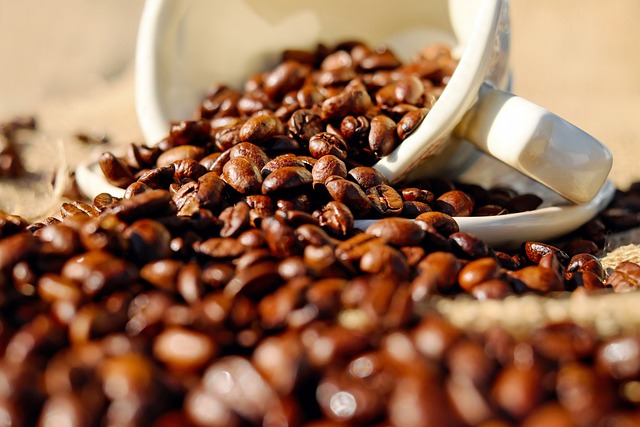
Mastering the pour-over technique is a cornerstone skill for home baristas aiming to craft their perfect cup of coffee. This method allows for a high degree of control over the extraction process, resulting in a flavorful and balanced brew. To begin, ensure you have a pour-over kettle, a medium-grind coffee (similar to sea salt), a pour-over device such as a V60 or Kalita Wave, a filter paper, and fresh, filtered water.
Start by boiling your water; the ideal temperature for brewing is just off the boil, around 92-96 degrees Celsius (198-205 degrees Fahrenheit). While the water heats, place the filter paper into your pour-over cone and rinse it with hot water to remove any paper taste and to warm the device. Discard this pre-rinse water. Then, gently add your ground coffee to the center of the filter. A standard ratio is 1 gram of coffee to 15-17 grams of water, but feel free to adjust based on your taste preferences.
Once your coffee is in place, start your timer and begin pouring a slow, steady stream of water over the grounds, targeting the center and spiraling outward. Aim to saturate all the coffee evenly without overflowing. After the first pour, wait until the water level in your carafe drops to about half before proceeding with the second pour. This technique allows for a controlled extraction, as the initial pour ‘blooms’ the coffee, releasing any carbon dioxide that could hinder proper extraction. The subsequent pours continue the extraction process, drawing out the coffee’s complex flavors.
For the second pour, add water until you reach the desired total brew volume. The entire brewing process should take about 2-4 minutes from the first pour. Remember to maintain a gentle, consistent pour; this ensures a gradual and even extraction. Once complete, carefully remove the filter and grounds, and enjoy your freshly brewed pour-over coffee. This method is not only rewarding but also offers endless opportunities for experimentation with different grind sizes, water temperatures, and brew times, allowing you to tailor each cup to your individual taste preferences.
Cold Brew vs. Iced Coffee: Understanding the Differences and Crafting Both at Home
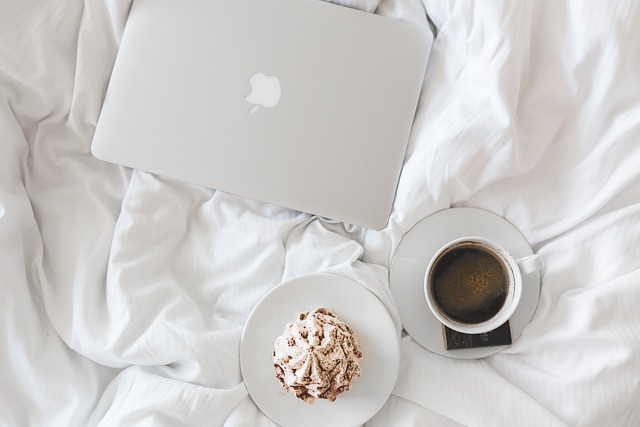
When delving into the world of chilled coffee beverages, it’s crucial to distinguish between cold brew and iced coffee. Cold brew is a highly concentrated coffee extract created by steeping coarsely-ground beans in room temperature or cold water for an extended period, typically 12 to 24 hours. This slow extraction process yields a smooth, less acidic drink with naturally sweet notes due to the gradual breakdown of caffeol and the absence of heat, which can otherwise extract bitter compounds from coffee. In contrast, iced coffee is hot-brewed coffee that is cooled over ice. It’s made by brewing coffee as you normally would with your preferred method, whether it be a French press, drip, or espresso machine, and then serving it over ice. This rapid cooling process can often result in a more robust flavor profile, as the cold does not have time to extract as much of the coffee’s natural sweetness.
To craft both cold brew and iced coffee at home, start by focusing on the fundamentals. For cold brew, choose a coarse grind and use a ratio of about 1:5 (coffee to water). Mix them in a container, stir gently to prevent clumping, cover, and let it sit in your refrigerator. After the allotted time, filter out the grounds using a fine-mesh strainer or a cold brew maker. For iced coffee, use a medium grind and maintain a standard coffee to water ratio, such as 1:15 to 1:18. Brew your coffee as usual and pour it over ice immediately. Both methods require patience and attention to detail, but they offer distinct experiences. Cold brew’s smoothness makes it ideal for those who prefer less acidity, while iced coffee’s quick preparation is perfect for a hot day when you crave the immediate refreshment of a cool coffee drink. Whether you’re in the mood for the mellow taste of cold brew or the robust kick of iced coffee, mastering these techniques at home can elevate your coffee experience to new heights.
Espresso Made Easy: Pulling the Perfect Shot on Your Home Machine
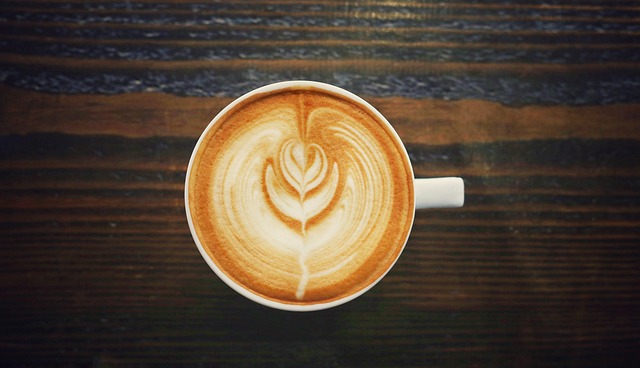
Mastering the art of pulling a perfect espresso shot at home can seem daunting, but with the right technique and a bit of practice, it’s within reach for any coffee enthusiast. The key to a great espresso lies in the details: from the quality of your beans to the grind size and the tamp pressure, each factor contributes to the taste and extraction of your shot. Start by selecting freshly roasted coffee beans, as their flavor is most vibrant right after roasting. Grind these beans to a fine consistency that’s similar to sand for sea shores, ensuring that the grinds are even for consistent extraction.
Preheat your espresso machine and portafilter to enhance the quality of your shot. When you’re ready to brew, distribute your ground coffee evenly in the portafilter basket, and gently tamp it down with approximately 30 pounds per square inch (PSI) of pressure. This process compresses the coffee into the filter paper, which allows for optimal water flow and extraction. After attaching the portafilter to the machine, begin pulling the shot. The espresso should start as a dark gold color, gradually turning to a lighter shade as it pours. If it’s too light or too dark, adjust your grind size accordingly. A perfectly pulled shot will have rich caramel colors with a creamy layer of crema on top—a sign of a well-extracted espresso. Practice these steps, and soon you’ll be able to consistently produce café-quality espresso from the comfort of your home.
In conclusion, the exploration of various coffee brewing methods presents a rich tapestry of possibilities for coffee enthusiasts. Whether your preference leans towards the robust flavors extracted through a French Press or the velvety smoothness of an Espresso shot, the art of coffee making is both accessible and rewarding at home. With the insights provided in this guide on mastering brewing techniques, understanding the nuances between Cold Brew and Iced Coffee, and achieving that perfect pour-over, you are now equipped to elevate your home coffee experience to café standards. Embrace these methods, experiment with diverse recipes, and enjoy the journey of discovering your ideal cup of coffee. Remember, the best coffee is one that suits your palate and brings joy to your daily routine. Bon appétit, or as we say in the world of coffee, bottoms up!




